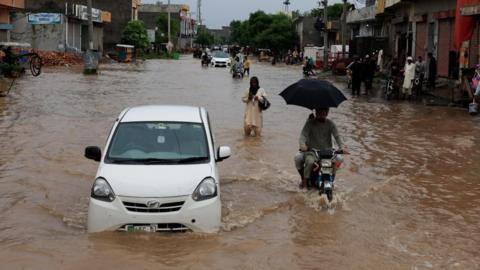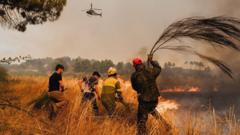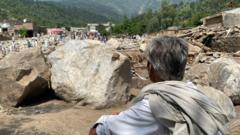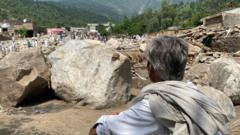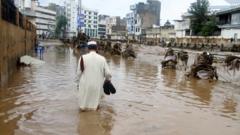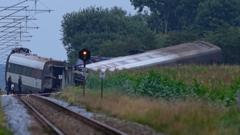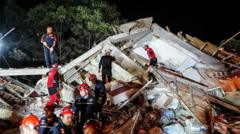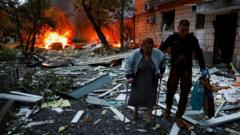In a tragic revelation that has rocked the Dominican Republic, the Jet Set nightclub in Santo Domingo experienced a catastrophic roof collapse during a live concert that claimed the lives of 232 people and injured nearly 200 others. Survivors and residents have raised serious concerns regarding the structural integrity of the building, particularly due to a history of excessive noise complaints and overloading the leaky roof with heavy equipment.
Witnesses recount that ominous signs were evident before the disaster struck. Around midnight, patrons were alarmed as small chunks of plaster and water began falling from the ceiling. Approximately 40 minutes later, the situation escalated dramatically when a large section of the roof collapsed, sending shockwaves through the establishment. "God warned us, but the music and the party didn’t let people hear it," said Nelson Pimentel, a 65-year-old attendee who noted the apparent age and maintenance issues of the club’s construction.
Despite the days of preceding warnings—sprinkles of debris falling and the evident structural neglect—the club was filled with partygoers representing various sectors of society, including bankers and politicians, when disaster struck on April 8. Many patrons had just seconds to escape as concrete, machinery, and debris rained down in a horrific tableau of chaos.
The tragedy at Jet Set has spotlighted a disconcerting trend in the Dominican Republic, where aging structures frequently go unchecked by governmental oversight. In recent years, at least seven other buildings have collapsed, leading to fatalities and raising alarms about building code enforcement. This incident raises pressing questions about public safety and regulatory accountability in the country.
As investigations unfold, experts are scrutinizing whether excessive noise, coupled with heavy equipment and aging infrastructure, contributed to the tragedy. The incident not only brings awareness to the pressing need for structural evaluations but challenges the nightlife industry to balance enjoyment with safety practices.
Witnesses recount that ominous signs were evident before the disaster struck. Around midnight, patrons were alarmed as small chunks of plaster and water began falling from the ceiling. Approximately 40 minutes later, the situation escalated dramatically when a large section of the roof collapsed, sending shockwaves through the establishment. "God warned us, but the music and the party didn’t let people hear it," said Nelson Pimentel, a 65-year-old attendee who noted the apparent age and maintenance issues of the club’s construction.
Despite the days of preceding warnings—sprinkles of debris falling and the evident structural neglect—the club was filled with partygoers representing various sectors of society, including bankers and politicians, when disaster struck on April 8. Many patrons had just seconds to escape as concrete, machinery, and debris rained down in a horrific tableau of chaos.
The tragedy at Jet Set has spotlighted a disconcerting trend in the Dominican Republic, where aging structures frequently go unchecked by governmental oversight. In recent years, at least seven other buildings have collapsed, leading to fatalities and raising alarms about building code enforcement. This incident raises pressing questions about public safety and regulatory accountability in the country.
As investigations unfold, experts are scrutinizing whether excessive noise, coupled with heavy equipment and aging infrastructure, contributed to the tragedy. The incident not only brings awareness to the pressing need for structural evaluations but challenges the nightlife industry to balance enjoyment with safety practices.









